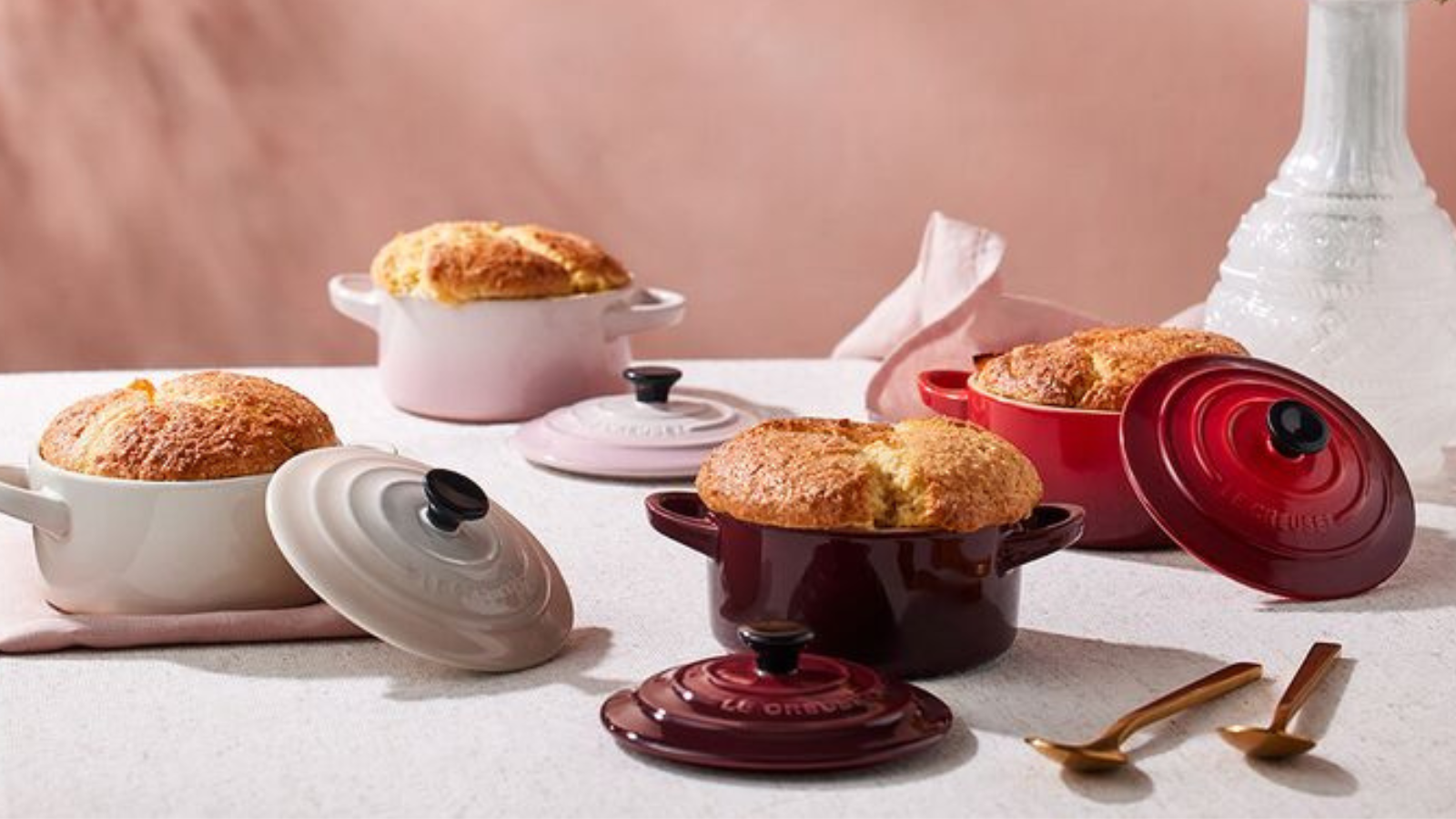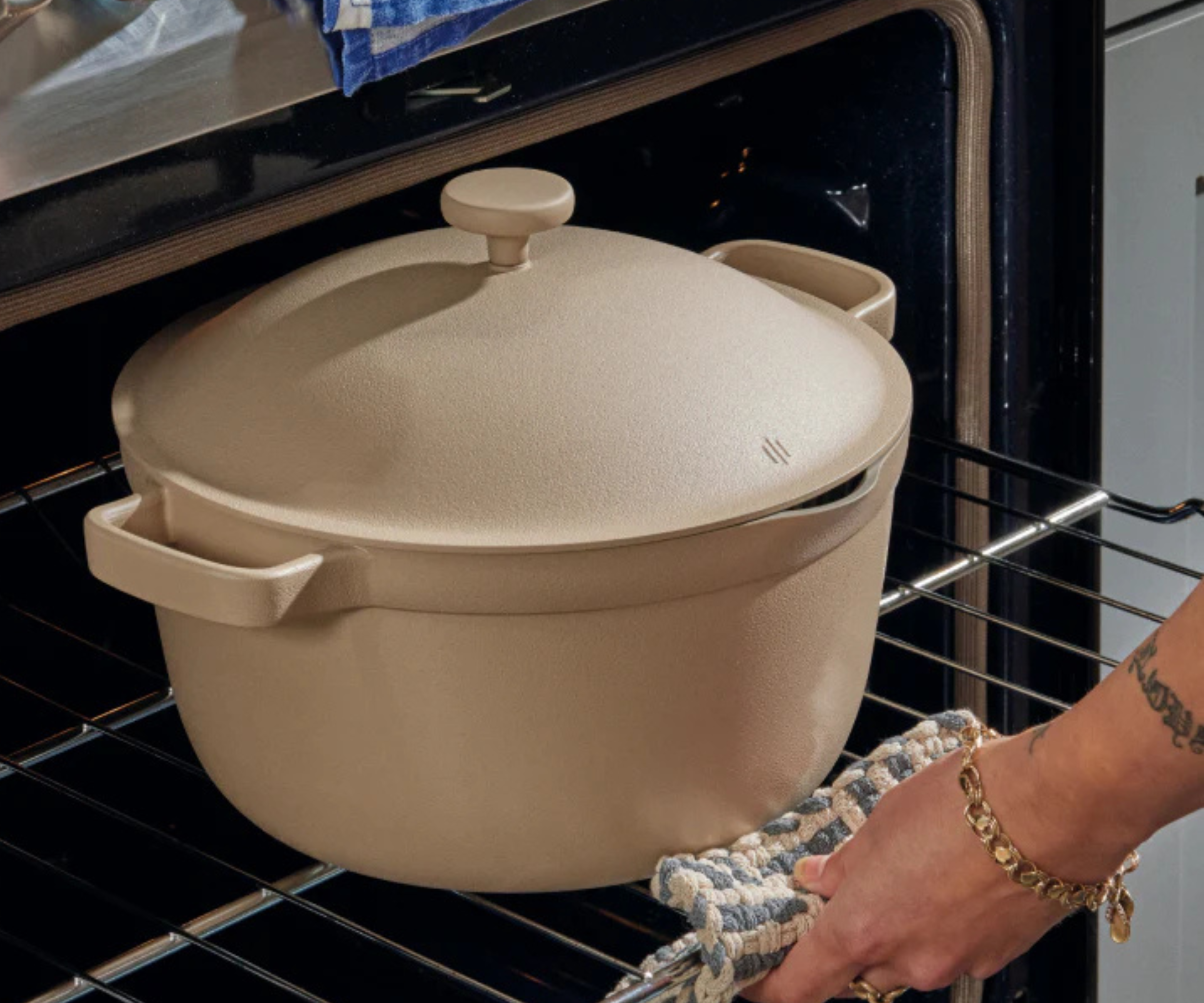10 Dutch oven mistakes that make me cringe (and a chef's tips on how to avoid them)
With these chef-approved techniques, you can enjoy delicious, Dutch oven dinners for decades

- 1. Preheating without oil or butter
- 2. Using high heat
- 3. Using a cheap knock-off
- 4. Using too little oil, fat, or liquid
- 5. Scratching the pan with metal utensils
- 6. Overcrowding the pot
- 7. Choosing the wrong size for your oven and stovetop
- 8. Plunging a hot Dutch oven into cold water
- 9. Cleaning with abrasive materials
- 10. Touching the burning hot handles

One of my earliest memories is watching my dad in the kitchen, slipping an oven mitt onto his right hand before seizing a piping hot Dutch oven with his bare left hand. We laugh about it now – it's a pretty obvious Dutch oven mistake to make. But there are far more subtle, perilous traps to fall into.
From scratching the surface with metal utensils to preheating without oil, the very thought of these Dutch oven mistakes has me clenching my teeth. Such careless handling could render your pot irreparably damaged. An expensive blunder, especially if you've invested in one of the most luxurious Staub or Le Creuset models.
The good news? Once you understand best practice, your Dutch oven will be your most cherished kitchen companion, providing decades of effortlessly tasty meals. As a trained cook, I've listed the biggest, cringe-worthy mistakes to watch out for.
1. Preheating without oil or butter

Never preheat an empty Dutch oven, especially if it’s enameled. Doing so can cause the enamel to crack from thermal shock. Instead, add your oil or butter to the pot before you start cooking. Let it heat gradually and look for a gentle ripple in the oil or foaming in the butter, which signals the right cooking temperature.
Chef's Tip: Keep an eye out. If the oil begins smoking or the butter starts to brown, it is too hot.
2. Using high heat

The beauty of a Dutch oven is its ability to retain heat efficiently. High heat is rarely needed; it can lead to burnt food build-up and damaged enamel. According to Le Creuset, 'Medium or low heat will provide the best results for cooking, even for frying and searing. Once the pan is hot, almost all cooking can be continued on lower settings.'
Chef's Tip: You might think you need to sear meat at high temperatures, but it's actually best to use medium heat and let the meat develop a crust, before flipping. It takes a few minutes, but it's the correct way to create flavor and reduce long-term damage to your Dutch oven.
Design expertise in your inbox – from inspiring decorating ideas and beautiful celebrity homes to practical gardening advice and shopping round-ups.
3. Using a cheap knock-off
If you're looking for a Dutch oven that will last for years, a knock-off version of the best brands is always going to disappoint you. Fake models have thinner walls and less durable materials, which are prone to uneven heating, chipping, and staining over time. If you're looking for a good models with a lower price tag, I regularly compile the Le Creuset clearance deals here.
4. Using too little oil, fat, or liquid

The cooking liquid should completely cover the base of the pan before heating begins. If you don’t use enough, you’re setting yourself up for some sticky situations. Without that oil barrier, your food is more likely too burnt and hard to lift off, leaving you with a stubborn mess. You might end up reaching for a metal utensil to scrape things off, which is a terrible idea (and leads me onto my next point).
Chef's Tip: I prefer using a mixture of oil and butter for shallow frying, as it creates a lovely rich flavor and increases the smoke point.
5. Scratching the pan with metal utensils

While Dutch ovens are tough, their enamel coating can be scratched by metal utensils. Silicone, wooden, or plastic tools are recommended. Le Creuset say, 'Hand-held electric or battery-operated beaters should not be used. Their blades will damage the enamel. Knives or utensils with sharp edges should not be used to cut foods inside a pan.'
Chef's Tip: Invest in a gentle set of silicone utensils, like these from OXO. Your frying pans will thank you, too.
6. Overcrowding the pot

It may be tempting to fit as much food as possible into your Dutch oven, but overcrowding leads to uneven cooking, especially when searing meats. Give your ingredients enough space to develop proper browning and maximum flavor.
Chef's Tip: If you're cooking a large meal, you can brown ingredients in two or three batches. I do this when cooking a large chili con carne. The space around the mince helps to achieve a beautiful crust and depth of flavor in the sauce.
7. Choosing the wrong size for your oven and stovetop

It's not a good look to be desperately trying to stuff a massive pot into your oven when your guests have arrived. You might think you’ll only use it for soups and stews, but you never know when you’ll want to bake something in it! While it’s tempting to go for a larger Dutch oven for family feasts, always make sure it fits comfortably in your oven.
Also, match the pan’s base size to your stovetop heat zone – this will avoid flaming or overheating the sides and damaging the handles.
Chef's tip: A 5-quart pot can create 5-6 servings, while a 7-quart Dutch oven can feed up to 8 people.
8. Plunging a hot Dutch oven into cold water

Always cool your Dutch oven after cooking. Plunging a hot pan into cold water can crack the enamel due to thermal shock.
Chef's tip: Simply let your pot cool down before washing up.
9. Cleaning with abrasive materials

Use a gentle brush to remove any food – just avoid metal scourers or harsh cleaning agents, as they can damage the enamel surface. Le Creuset recommends, 'filling the pan with warm water and let soak for 15 to 20 minutes before washing.'
Chef's tip: Don't forget to dry the pot thoroughly, too! If you store away regular cast iron that's still damp, it could develop rust.
10. Touching the burning hot handles

It's a bit obvious, but I'll include this point so you don't make the same painful mistake! Those cast iron handles and knobs get incredibly hot. Always use oven mitts to avoid burns, especially when transferring the pot from the stove to the oven or table.
Chef's Tip: Invest in a pair of colorful oven mitts (I'm obsessed with the gorgeous patterns from Anthropologie) and keep them nearby!
Those are my top tips for avoiding common Dutch oven mistakes. If you need more advice, the best retailers will provide detailed care instructions on their websites, as well as delicious recipe inspiration. Check out the latest advice under 'care and use' on Staub, Zwilling, Le Creuset and Williams Sonoma.

Lydia is the Kitchen Appliances Editor for Homes & Gardens, testing everything from air fryers and mixers to juicers and coffee machines. She trained in Culinary Arts at Leiths School of Food & Wine and previously served as the Recipe Editor for Mindful Chef.





